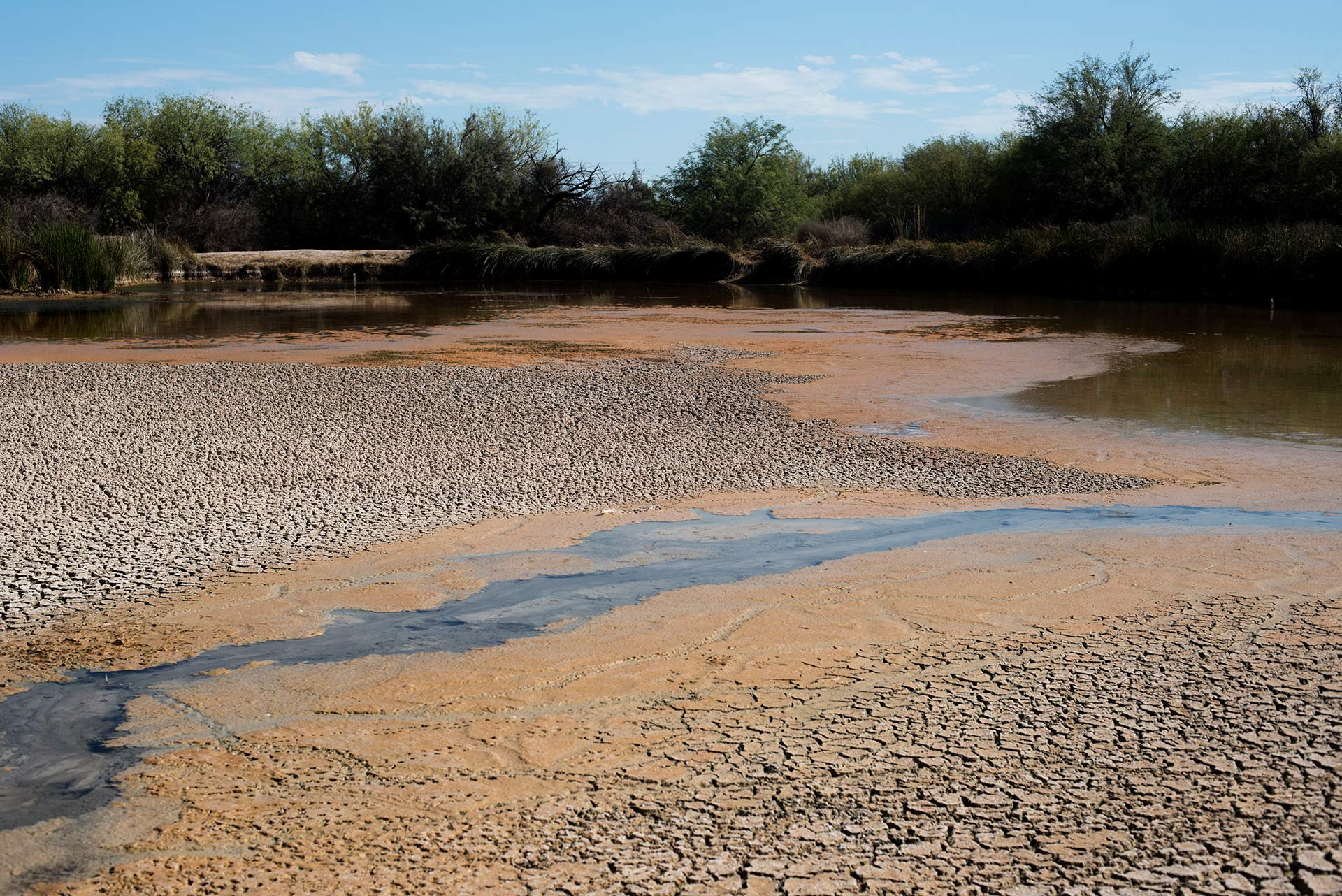 VIEW LARGER Cracked mud flats appear on the surface of Quitobaquito pond on July 18, 2020.
VIEW LARGER Cracked mud flats appear on the surface of Quitobaquito pond on July 18, 2020. A coalition of scientists says the Trump administration's border wall project in Organ Pipe Cactus National Monument is wreaking havoc at Quitobaquito Springs.
Located a few paces from the U.S.-Mexico border, the spring system is the only source of freshwater for miles and has existed for some 10,000 years. It feeds into a pond that used to be home to Hia-Ced O'odham and Tohono O'odham tribal communities.
Contractors have been building a 30-foot border wall across Organ Pipe since last year. As it inches closer to Quitobaquito, University of Arizona agricultural ecologist Gary Nabhan has been visiting every chance he gets.
"I’ve been going to Quitobaquito every three months this year, and have been going there for 32 years, and have never seen it in worse condition," he said.
Nabhan said the spring system and the pond it feeds are home not only to endangered species like the Sonoyta pupfish and mud turtle, but also to a variety of important vegetation. He said there used to be other springs like this in the desert.
"This went from the most biodiverse and culturally rich habitat complex in the Sonoran Desert to being the last oasis that had any of those elements because we've dried up so many other ones with groundwater pumping elsewhere," he said. "And even after those hits, it survived until the Border Patrol began the wall construction, the groundwater pumping, the dynamiting and the disruption of the vegetation that supports habitats and food for animals who have come to the oasis for thousands of years."
Nabhan is one of over 25 hydrologists and ecologists who co-signed a letter asking the U.S. government to halt construction within 10 miles of the desert oasis. They say dynamite, water pumping, traffic and drought are creating a perfect storm, but a halt on construction would help.
"No other factor of the many factors that are contributing to this decline in spring flow can explain why it has trickled down so much in the last few months," he said. "It has to be related to the new well pumping and dynamiting right along the fault line that the springs occur on."
The scientists estimate the pond has dropped 15 inches in the last three or four months, leaving some three quarters of the remaining pond with less than a foot of water.The spring's flow dropped to a historic low of 5.5 gallons per minute in mid-July.
Indigenous groups, conservationists and scientists have been raising the alarm over Quitobaquito's decline for the last several months.
Last fall, U.S. Customs and Border Protection said contractors needed 84,000 gallons of groundwater per day for construction but wouldn't drill within 5 miles of the spring system. Nabhan said some experts worry the 5-mile limit may have still been too close.

By submitting your comments, you hereby give AZPM the right to post your comments and potentially use them in any other form of media operated by this institution.